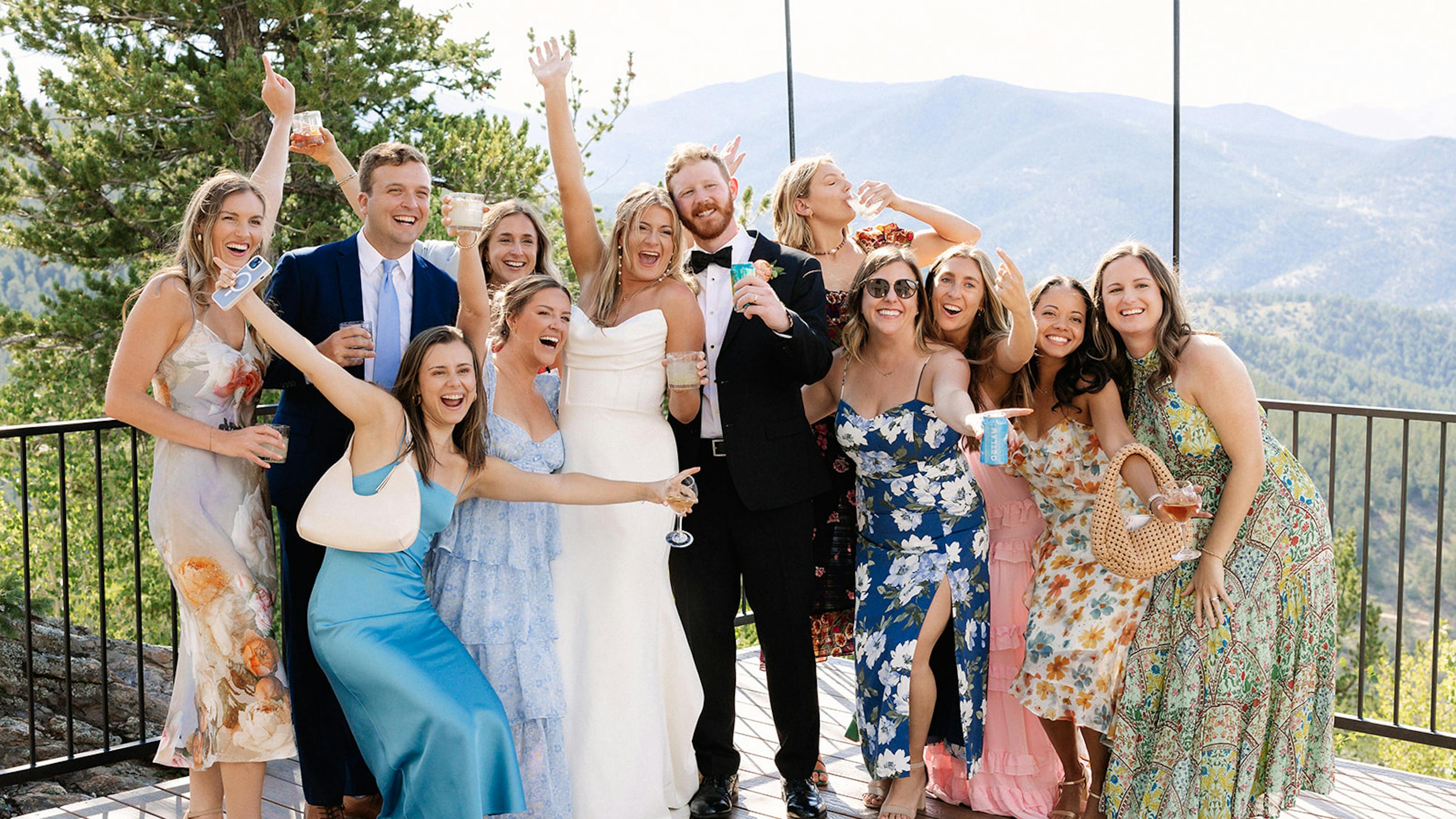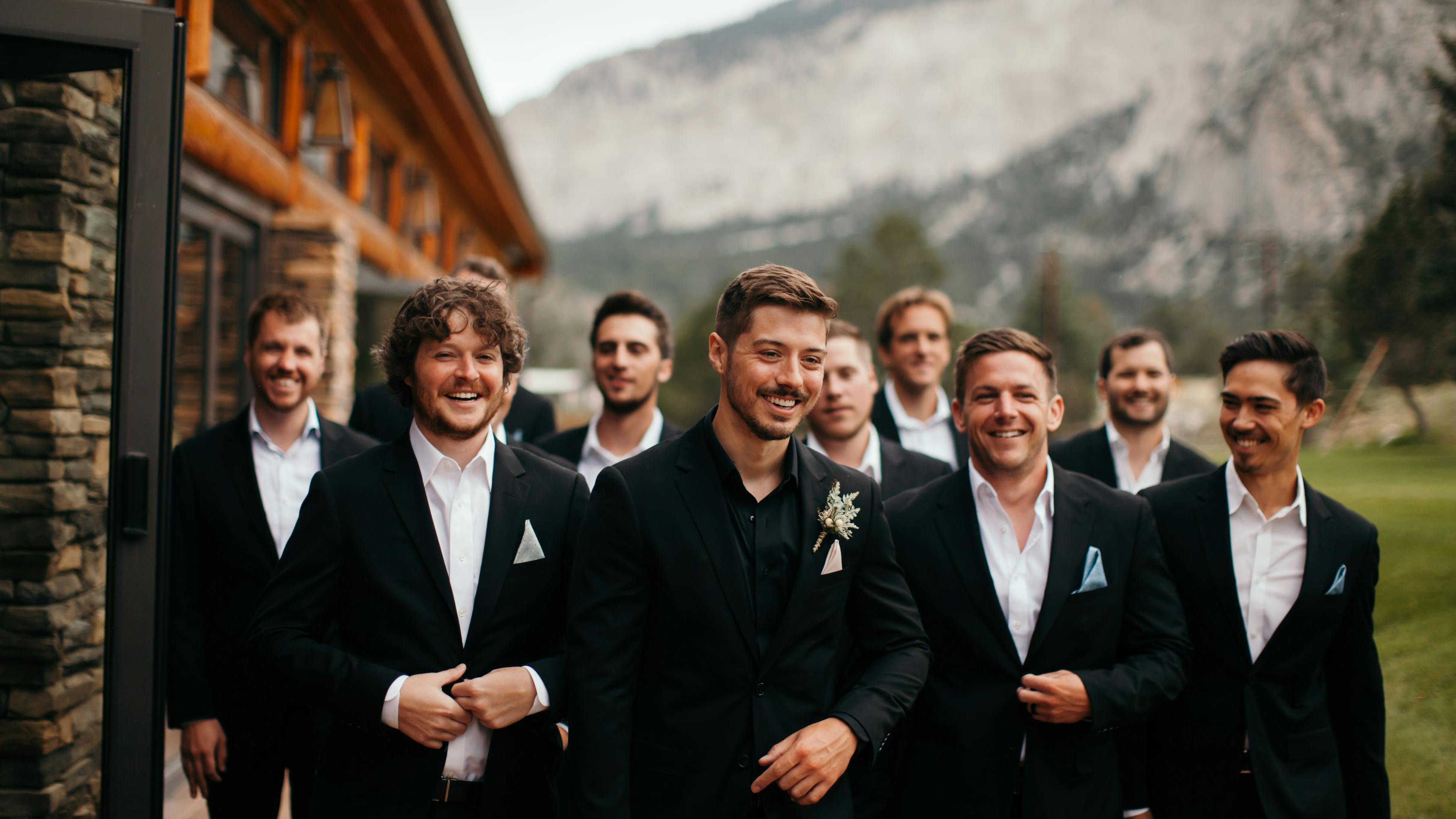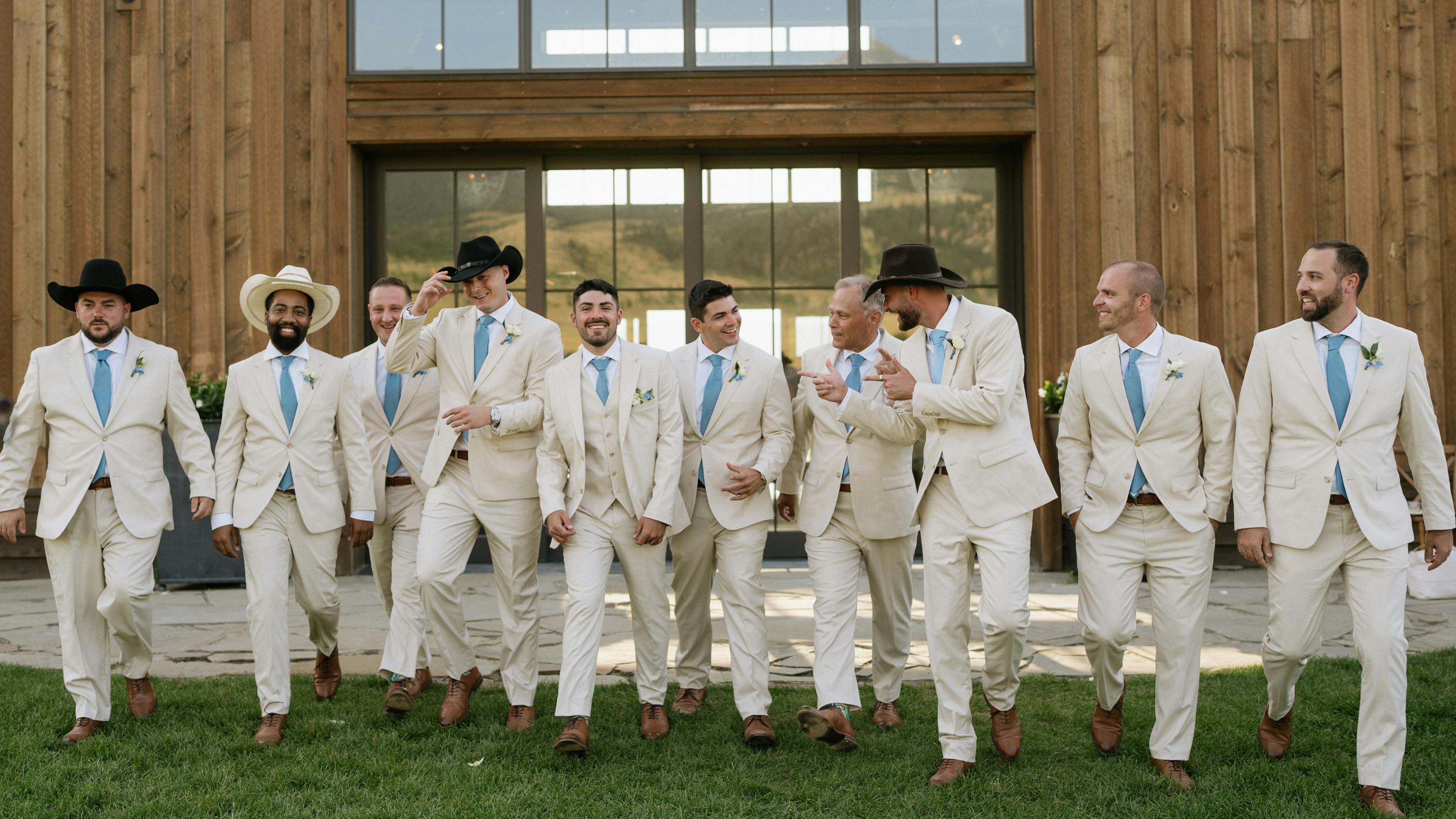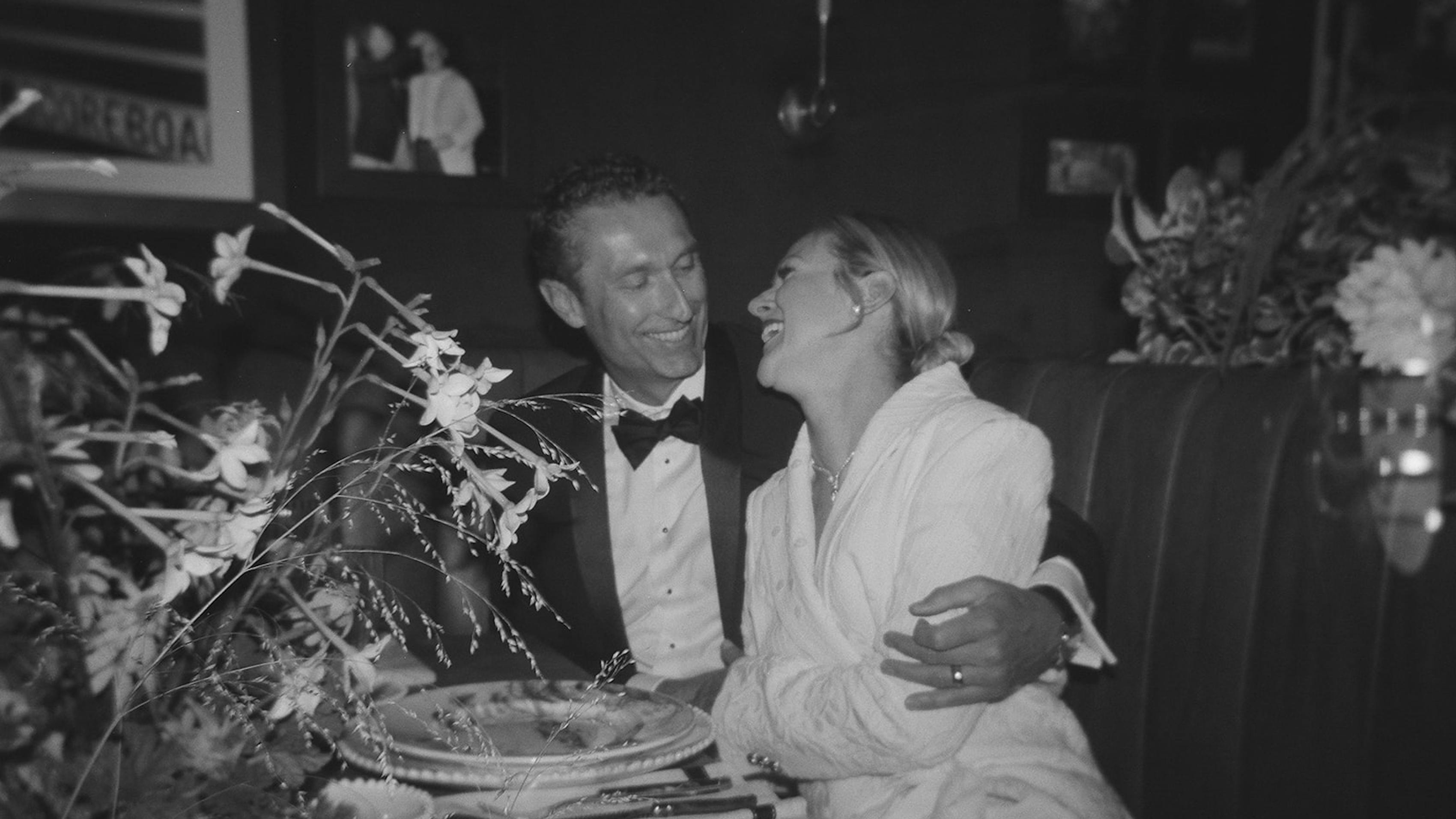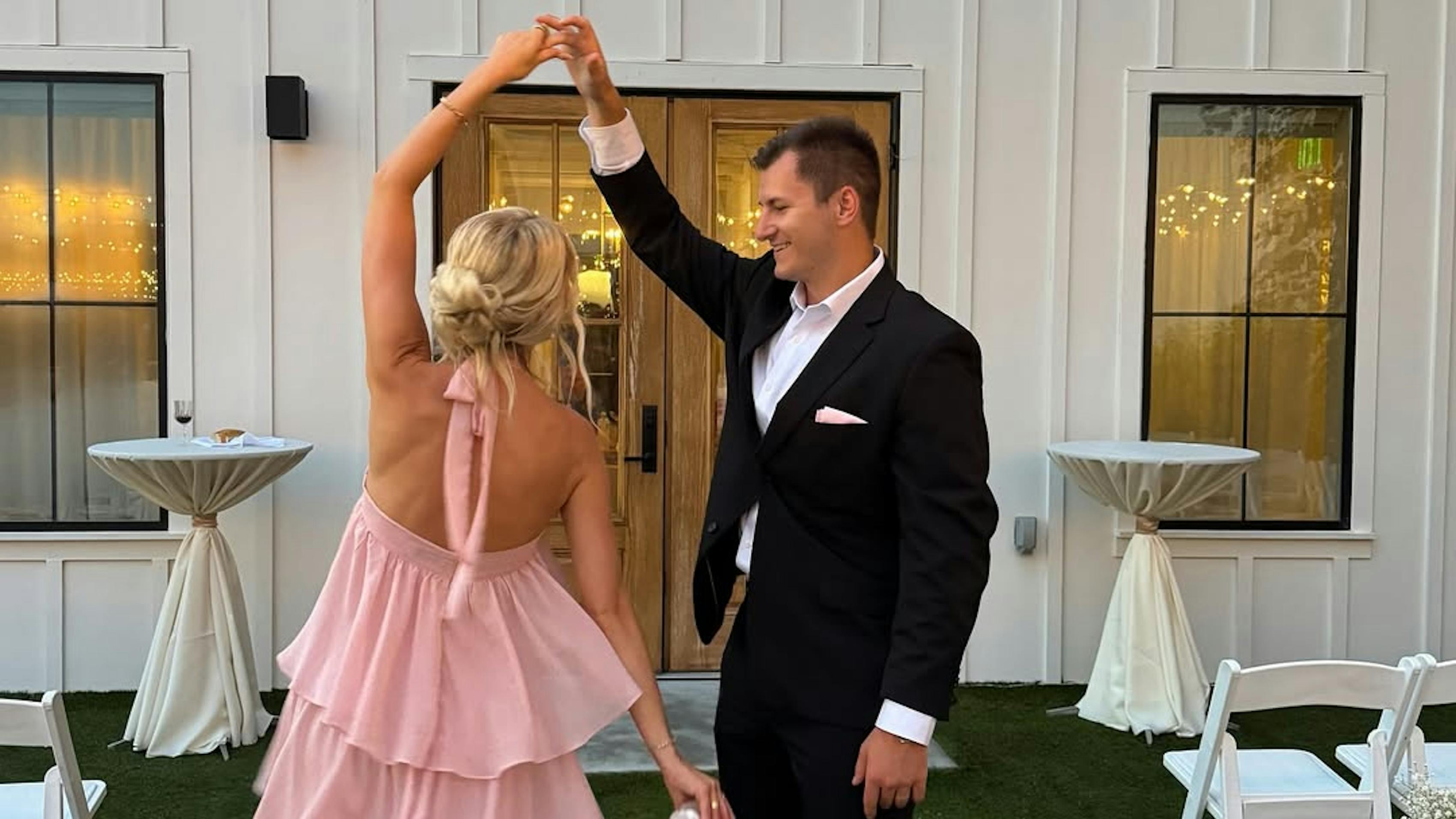Wedding dress codes have evolved beyond traditional labels like casual, cocktail, or black tie. One of the latest trends sweeping the wedding world is the color palette wedding dress code, where couples encourage guests to dress within a specific set of hues that match the wedding aesthetic. Instead of just setting formality levels, couples are now asking guests to coordinate with the overall look and feel of the event by adding in color choices.
In this guide, we’ll explore what a color palette wedding dress code is, how couples can request it without causing confusion or stress, and examples of how this approach plays out in practice.
What Is a Color Palette Wedding Dress Code?
Unlike standard dress codes that simply indicate how formal or casual guests should dress, a color palette wedding dress code offers a specific visual theme. Couples provide guests with a set of colors—sometimes as a swatch, mood board, or detailed description—and ask them to select outfits that align with those shades.
For example, a couple hosting a beachside wedding might request attire in soft blues, sandy neutrals, and seafoam green, while a moody autumn wedding could encourage deep burgundy, forest green, and warm copper tones. The idea is to create a visually harmonious atmosphere, allowing guests to blend seamlessly with the event’s overall aesthetic.
This concept works particularly well for weddings with a strong design focus, such as garden weddings, bohemian celebrations, or modern minimalist events. It allows for creative expression while still aligning with the couple’s vision. Most importantly, it’s meant to be a fun guideline, not a strict rule, ensuring that guests feel comfortable while contributing to the wedding’s unique ambiance.
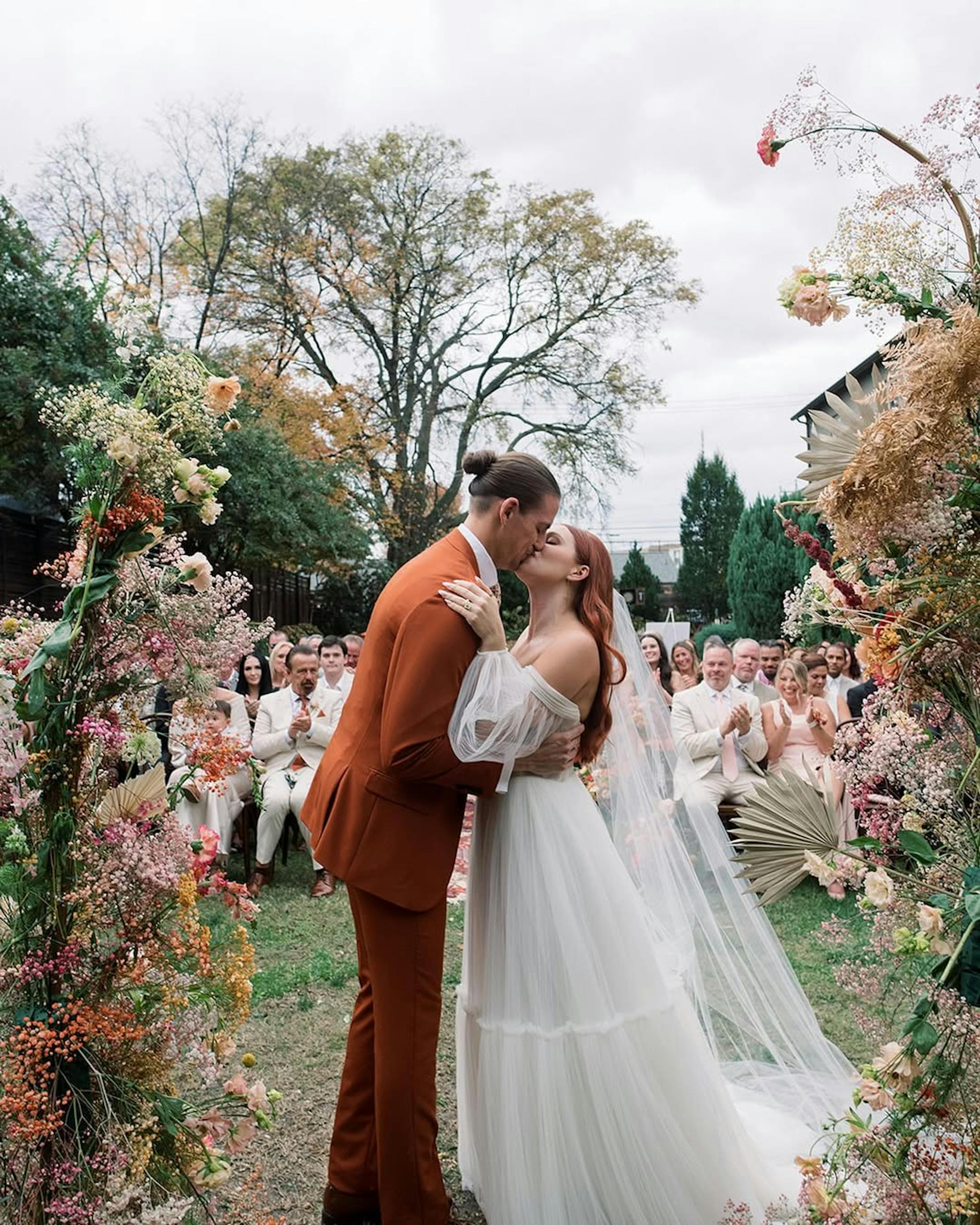
How to Request a Color Palette Dress Code
While many guests enjoy the idea of dressing within a theme, some may worry that a color palette dress code adds extra pressure. To ensure that the request is well-received, it’s important to communicate it clearly and in a way that feels inviting rather than demanding.
Make It Clear That It’s a Guideline, Not a Rule
One of the biggest concerns guests have about color palette dress codes is whether it’s a strict requirement. The best way to avoid pushback is to frame it as an invitation to participate rather than an obligation. A simple line on the invitation or wedding website—such as "We’d love for our guests to dress in soft earth tones, but most importantly, wear what makes you feel your best!"—can go a long way in making guests feel comfortable.
Provide Visual Inspiration (and Clarification)
Many guests might not be familiar with certain color names or tones, so offering a Pinterest board, mood board, or even printed color swatches can help. For example, if the theme includes sage green, champagne, and terracotta, showing outfit examples in those shades will clarify the vision. This is especially helpful if you use more vague terms to describe the vibe you’re going for, as they could be subjective.
Keep the Palette Broad and Flexible
Instead of restricting guests to just one or two shades, a range of complementary colors gives them more options. A fall wedding might include burgundy, mustard, navy, and rust, while a spring wedding could feature blush, lavender, mint, and soft gray. The more choices, the easier it is for guests to participate without feeling like they have to shop for something new or wear a color they’re not fond of.
Encourage Subtle Ways to Incorporate the Colors
Some guests may already have outfits in the requested colors, while others may prefer to incorporate the theme through accessories. Ties, scarves, pocket squares, jewelry, and shoes in the suggested hues allow guests to participate in less overt ways.
Acknowledge That Not Everyone Will Follow the Dress Code—And That’s Okay
At the end of the day, not every guest will adhere to the dress code, and that’s perfectly fine. The goal is to encourage rather than enforce, so embracing a relaxed attitude will make the experience more enjoyable for all.
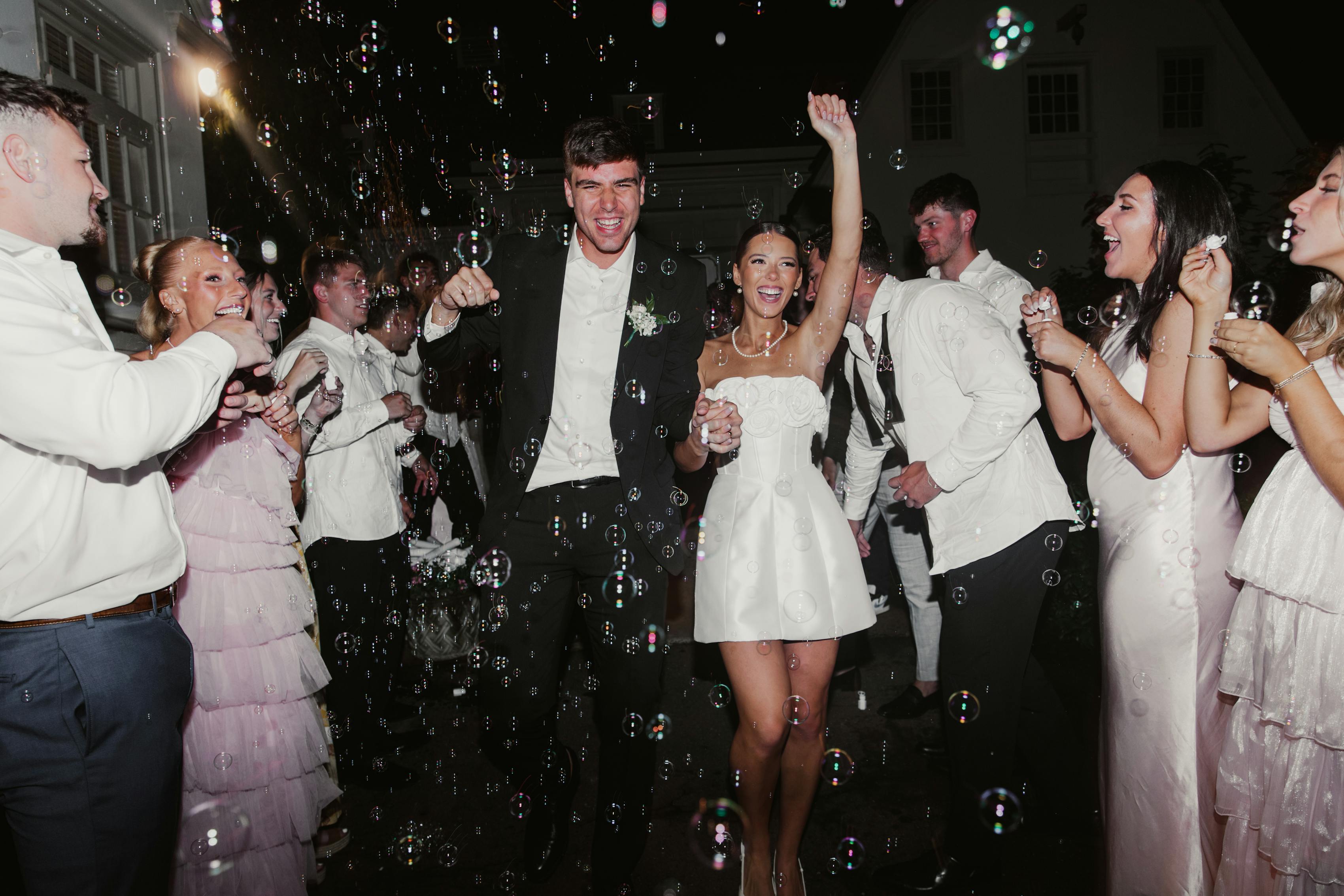
Examples of Color Palette Dress Codes for Different Wedding Styles
- Elegant neutrals: A couple planning a classic or traditional wedding might opt for a dress code featuring champagne, soft gray, ivory, and taupe. These shades create a sophisticated atmosphere while allowing guests to choose outfits that fit the level of formality.
- Romantic pastels: For a wedding set in a lush garden, a pastel-inspired palette with blush pink, periwinkle, mint green, and pale lavender can complement the natural surroundings. Guests could wear flowing dresses, light linen suits, or floral-patterned pieces that match the setting.
- Warm and rustic tones: An autumn wedding might feature a palette of deep rust, mustard yellow, forest green, and burgundy, reflecting the rich tones of the season. These colors work well for both formal and semi-formal attire, making it easy for guests to find something that aligns with the theme.
- Bold and playful colors: For couples who love vibrant and unconventional styles, a color palette featuring jewel tones like emerald, sapphire, and magenta can add an element of fun. Encouraging guests to wear bold prints, unique textures, or statement accessories keeps the energy playful and celebratory.
- Coastal blues: A seaside wedding may call for a palette inspired by the ocean, such as sky blue, navy, sandy beige, and seafoam green. Lightweight fabrics like linen and flowy silhouettes in these hues help guests stay comfortable while complementing the natural beauty of the setting.
Color Palette Wedding Dress Codes: Frequently Asked Questions
How do we choose the right colors for our wedding dress palette dress code?
Start by considering your wedding’s overall theme, season, and venue. Soft pastels or earthy neutrals work beautifully for spring and summer weddings, while rich jewel tones or deep, moody hues are great for fall and winter. If you already have a set color scheme for décor, florals, or invitations, aligning your dress code with those colors can create a visually cohesive event.
How can we communicate the color palette to our guests?
The key is to make it clear that the palette is a guideline, not a requirement. You can also provide inspiration images to help guests visualize the palette without feeling pressured.
What if guests don’t follow the color palette?
Not everyone will interpret the palette the same way, and that’s okay! Some guests may already own something that fits perfectly, while others may wear a shade that’s outside the suggested colors. As long as the overall aesthetic aligns with your vision, don’t stress over a few guests dressing differently. The goal is to create a cohesive atmosphere.
How can we accommodate guests who might struggle to find something in the suggested colors?
Offering a range of colors—including neutrals like beige, gray, or navy—gives guests more flexibility. You can also suggest incorporating the colors through accessories like ties, pocket squares, scarves, or jewelry. Letting guests know that close matches are welcome helps ease any pressure they might feel about finding the exact shades.
Can the dress code include a color palette and level of formality?
Sure! To ensure your guests understand the aesthetic you’re going for, you can include both a traditional dress code and a color palette. Adding a range of color choices to formal attire, semi-formal attire, cocktail dress code, etc., can help narrow down how you want your loved ones to dress without being overly restrictive.
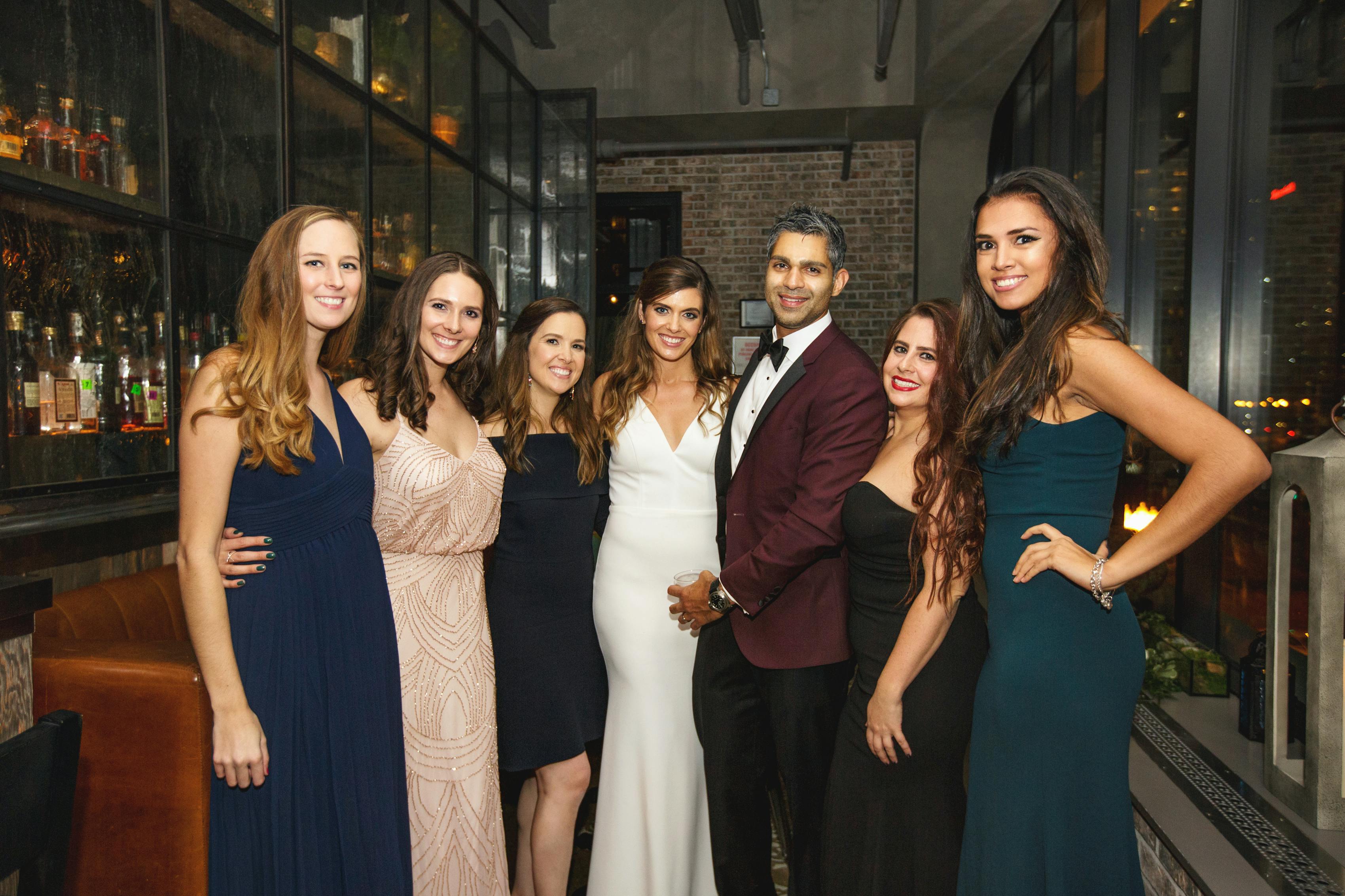
Making a Color Palette Dress Code Work for Your Wedding
A color palette wedding dress code is a creative way to bring a wedding’s aesthetic vision to life while giving guests a fun and helpful guideline for their attire beyond (or instead of!) the traditional dress codes. When approached with flexibility and clear communication, it can enhance the wedding atmosphere and make for stunning photos without adding unnecessary stress.
For those looking for suits and formalwear that match any wedding palette, SuitShop offers a variety of styles in a range of colors, making it easy to find the perfect outfit—whether the theme is earthy neutrals, rich jewel tones, or soft pastels.

Nathaniel Longmore
Nate, a former SuitShop groom, is a writer by passion and trade. When he's not typing away from a local coffee shop, you can find him hiking the trails or searching the racks of a thrift store.
